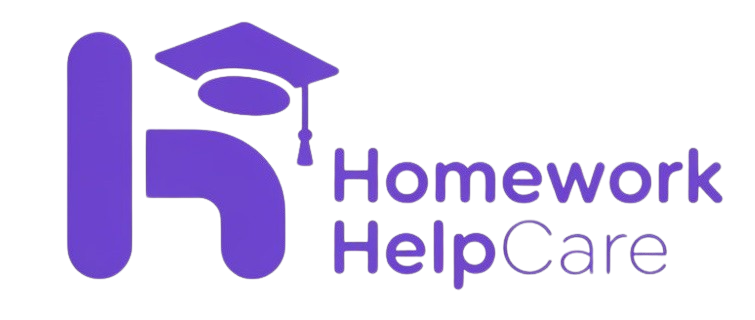Blog
Using Grammarly and Other Tools to Polish Homework
Are you struggling with grammar errors in your assignments? Wondering how to improve your writing quality without spending hours on manual proofreading? Digital writing assistants like Grammarly have transformed how students approach homework editing. This guide explores how to effectively leverage these tools while maintaining your academic voice and integrity.
What Are Proofreading Tools?
Definition and Evolution of Writing Assistants
Proofreading tools are software applications designed to identify and correct grammatical errors, spelling mistakes, punctuation issues, and style inconsistencies in written text. What began as simple spell checkers in the 1970s has evolved into sophisticated AI-powered writing assistants that can analyze tone, suggest vocabulary improvements, and even check for plagiarism.
These tools serve as digital writing companions that help students polish their assignments before submission, potentially improving grades and developing better writing habits over time.
Popular Proofreading Tools in 2025
| Tool | Core Features | Best For | Pricing Model |
|---|---|---|---|
| Grammarly | Grammar, spelling, punctuation, tone detection, plagiarism checking | General writing, essays, research papers | Freemium (Basic free, Premium $12-30/month) |
| ProWritingAid | In-depth style analysis, readability scores, contextual thesaurus | Long-form writing, dissertations | Freemium ($20/month for premium) |
| Hemingway Editor | Readability focus, sentence complexity analysis | Simplifying academic writing | Free online, one-time $19.99 for desktop |
| QuillBot | Paraphrasing, summarizing, grammar checking | Rephrasing complex concepts | Freemium ($9.95/month for premium) |
| Wordtune | Context-based rewrites, tone adjustments | Refining expression of ideas | Freemium ($24.99/month for premium) |
How Grammarly Works
Core Functionality Explained
Grammarly utilizes natural language processing (NLP) and machine learning algorithms to analyze text against a vast database of grammatical rules and writing patterns. When you type or paste text into Grammarly, it processes your writing through several layers of analysis:
- Surface-level corrections – Spelling, punctuation, and basic grammar
- Contextual spelling – Words that are spelled correctly but used incorrectly (e.g., “their” vs. “there”)
- Grammar rules – Subject-verb agreement, verb tense consistency, article usage
- Style and clarity – Sentence structure, wordiness, passive voice usage
- Tone detection – Analysis of how your writing might come across to readers
Dr. Max Lytvyn, co-founder of Grammarly, explains: “Our goal has always been to help people communicate more effectively, not just fix their grammar.”
Free vs. Premium Features
Free Version Capabilities:
- Basic spelling, grammar, and punctuation checks
- Limited style suggestions
- Tone detection
- Basic readability checks
Premium Version Adds:
- Advanced grammar checks
- Vocabulary enhancement suggestions
- Genre-specific writing style adjustments
- Plagiarism detection
- Formal language checks
- Fluency suggestions for non-native English speakers
- Full-sentence rewrites
According to a 2024 survey by the National Association of Student Writing Centers, 78% of students find the free version sufficient for routine homework assignments, while 22% believed premium features significantly improved their higher-stakes projects like term papers and theses.
Integration with Writing Platforms
One of Grammarly’s strengths is its seamless integration across multiple platforms:
- Browser extensions for Chrome, Firefox, Safari, and Edge
- Microsoft Office add-ins for Word and Outlook
- Desktop application for Windows and Mac
- Mobile keyboard for iOS and Android
- Google Docs integration
This cross-platform functionality means students can maintain consistent writing quality regardless of where they’re working on assignments.
Beyond Grammar: Other Important Proofreading Tools
Alternative Solutions
While Grammarly dominates the market, several other tools offer unique approaches to improving academic writing:
ProWritingAid stands out for its comprehensive writing reports that analyze:
- Sentence structure variety
- Overused words
- Readability statistics
- Consistency in spelling and punctuation
- Clichés and redundancies
Professor Emily Chen of Stanford’s Writing Center notes, “ProWritingAid offers deeper stylistic analysis that can be particularly valuable for upper-level undergraduate and graduate students working on longer research papers.”
Hemingway Editor focuses exclusively on readability and concision. It highlights:
- Complex sentences that are hard to read
- Passages with simpler alternatives
- Adverbs and passive voice
- Reading level of your text
QuillBot excels at paraphrasing and offers:
- Multiple paraphrasing modes (Standard, Fluency, Creative)
- Summarization tools
- Citation generators
- Grammar checking capabilities
Specialized Academic Tools
Different academic disciplines often require specialized writing tools:
| Discipline | Specialized Tools | Unique Features |
|---|---|---|
| STEM | LaTeX with Overleaf, Mathpix | Equation formatting, technical notation |
| Legal Studies | Westlaw Edge, LexisNexis | Legal citation checking, precedent analysis |
| Literature | Scrivener, MLA Formatter | Literary citation styles, manuscript organization |
| Medicine | AMA Manual Citation Tool, PubMed Plus | Medical terminology checking, clinical citation styles |
| Business | Harvard Business Review Style Guide Tools | Business case formatting, executive summary assistance |
Free Academic Writing Resources
Many universities provide free access to premium writing tools. For example:
- University Writing Centers often offer licenses for citation tools like EndNote or RefWorks
- Library Services frequently provide access to scholarly databases with built-in citation tools
- Academic Department Resources may include discipline-specific style guides and templates
The University of Michigan’s Writing Center director Dr. James Wilson suggests: “Before paying for any writing tool, check what your institution already offers. Many students don’t realize they have free access to powerful writing resources through their university.”
Best Practices for Using Proofreading Tools
When to Use Automated Tools vs. Human Proofreading
Automated tools excel at:
- Identifying consistent grammatical errors
- Catching spelling mistakes
- Highlighting basic punctuation issues
- Providing quick feedback on readability
Human proofreading remains superior for:
- Understanding nuanced arguments
- Evaluating logical flow of ideas
- Checking factual accuracy
- Preserving author’s unique voice
Best approach: Use digital tools for initial passes, then have a trusted human reader review important assignments before submission.
Common Pitfalls and Limitations
Despite their sophistication, AI writing assistants have significant limitations:
- Contextual understanding gaps – They may miss errors or suggest incorrect changes when context is complex
- Disciplinary blindspots – Many aren’t trained on specialized academic terminology
- Over-reliance risk – Students who depend too heavily on tools may fail to develop their own editing skills
- Inconsistent style recommendations – Suggestions may not align with specific academic style guides
Psychology professor Dr. Rebecca Martinez warns: “Students who blindly accept all automated suggestions risk homogenizing their writing and losing their authentic voice.”
Tips for Maximizing Effectiveness
• Learn from corrections – Don’t just accept changes; understand why they were suggested
• Customize settings for your discipline and assignment type
• Run multiple tools for comprehensive feedback
• Save before-and-after versions to track improvement
• Schedule dedicated editing time rather than relying on last-minute checks
• Develop a personal error pattern list to watch for your common mistakes
Academic Integrity Considerations
University Policies on Proofreading Tools
University policies on digital writing assistants vary widely:
- Most institutions permit basic grammar and spell-checking
- Some restrict plagiarism detection features
- Others limit AI-generated rewrites
- Nearly all prohibit AI content generation for assignments
Examples of institutional approaches:
- Harvard University explicitly permits Grammarly for proofreading but prohibits generative AI features
- UCLA requires disclosure when AI assistance exceeds basic proofreading
- MIT encourages tool use but emphasizes learning from corrections
It’s crucial to review your institution’s specific policies, usually found in the academic integrity or student handbook sections of university websites.
Maintaining Your Authentic Voice
When using automated tools:
• Be selective about accepting suggestions – particularly with word choice and sentence structure
• Review all changes before submitting your work
• Preserve technical terminology specific to your field
• Consider your audience and purpose when evaluating tone suggestions
Dr. Sandra Johnson, linguistics professor at Cornell University, advises: “The best use of these tools is to enhance your natural writing style, not replace it. Be especially cautious with suggestions that change your meaning or voice.”
Where Tool Assistance Ends and Plagiarism Begins
Understanding the boundaries is essential:
✅ Acceptable tool uses:
- Grammar and spelling correction
- Punctuation assistance
- Style suggestions you review and selectively implement
- Plagiarism checking your own work
❌ Potentially problematic uses:
- Accepting all AI-generated rewrites without review
- Using tools to paraphrase sources without citation
- Employing content generation features for assignments
- Having someone else run your work through tools and make all corrections
According to the International Center for Academic Integrity’s 2024 guidelines, “Students remain responsible for the final version of their submitted work, regardless of which tools assisted in its preparation.”
Subject-Specific Proofreading Strategies
STEM vs. Humanities Writing Differences
STEM writing typically prioritizes:
- Precision in technical terminology
- Clear presentation of data
- Concise explanations of methods
- Proper equation and unit formatting
Humanities writing often emphasizes:
- Nuanced arguments
- Theoretical frameworks
- Stylistic elements
- Cultural and historical context
These differences necessitate different proofreading approaches. Engineering professor Dr. Wei Zhang recommends: “STEM students should prioritize technical accuracy over stylistic suggestions, while ensuring that explanations remain accessible to their intended audience.”
Citation and Reference Checking Tools
| Citation Style | Recommended Tools | Key Features |
|---|---|---|
| APA | Zotero, Mendeley, Citation Machine | Auto-formatting for psychology, education, sciences |
| MLA | EasyBib, Citation Generator, Zotero | Literature, language arts, cultural studies formatting |
| Chicago | EndNote, Chicago Manual Style Tool | History, arts, business documentation |
| IEEE | IEEE Citation Creator, LaTeX with BibTeX | Engineering and computer science formatting |
| AMA | Citationsy, AMA Manual Tools | Medical and health sciences citation |
Most citation tools offer:
- Database integration for automatic source information
- In-text citation formatting
- Bibliography generation
- Style switching capabilities
Discipline-Specific Writing Tools
Beyond general proofreading, consider specialized tools for your field:
- Science and Engineering: LaTeX editors with discipline-specific packages
- Psychology: APA Style CENTRAL for format checking
- Law: Legal citation checkers like LexisNexis
- Medicine: Medical terminology dictionaries integrated with word processors
- Foreign Languages: Language-specific grammar checkers beyond English
Computer science major Sophia Williams shares: “For my programming-heavy assignments, I use a combination of technical documentation linters alongside Grammarly for the written portions. Standard grammar checkers often flag perfectly valid code concepts.”
FAQs About Using Writing Tools for Homework
Most educational institutions consider basic proofreading tools acceptable for identifying and correcting errors in your writing. However, they generally draw the line at tools that generate content or substantially rewrite your work. Always check your school’s academic integrity policy and ask your instructor if you’re unsure.
Both offer valuable features for academic writing. Grammarly excels at user-friendly interface and quick corrections, making it ideal for shorter assignments and general writing. ProWritingAid provides more in-depth stylistic analysis beneficial for longer research papers and theses. Many serious students use both, letting Grammarly catch basic errors and ProWritingAid handle deeper revisions.
Be selective about which suggestions you accept. Focus on objective errors in grammar, spelling, and punctuation while being more cautious with style and word choice recommendations. Remember that these tools are designed to assist your writing process, not replace your unique perspective and expression.
Professors cannot directly detect Grammarly use in submitted documents. However, they may notice significant improvements in writing quality compared to in-class work or dramatic changes in writing style. Many professors actually encourage the responsible use of proofreading tools as part of the editing process.


